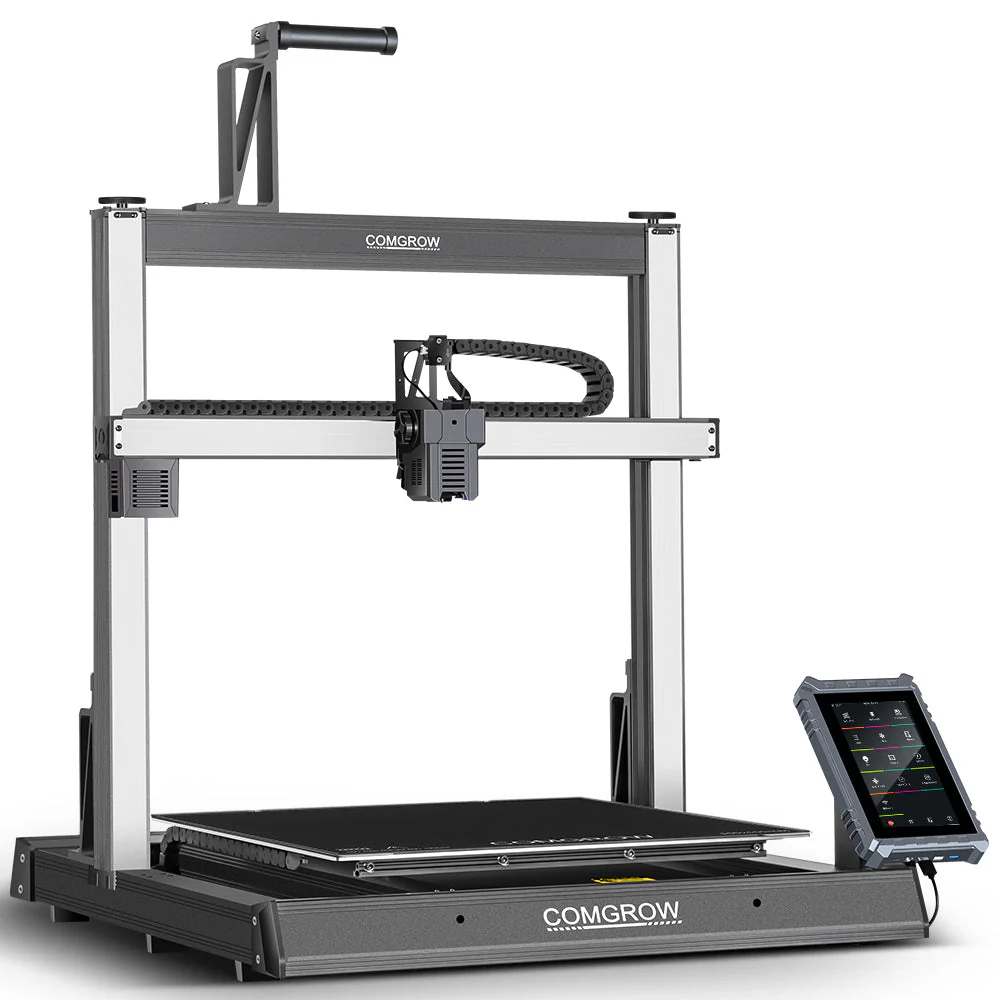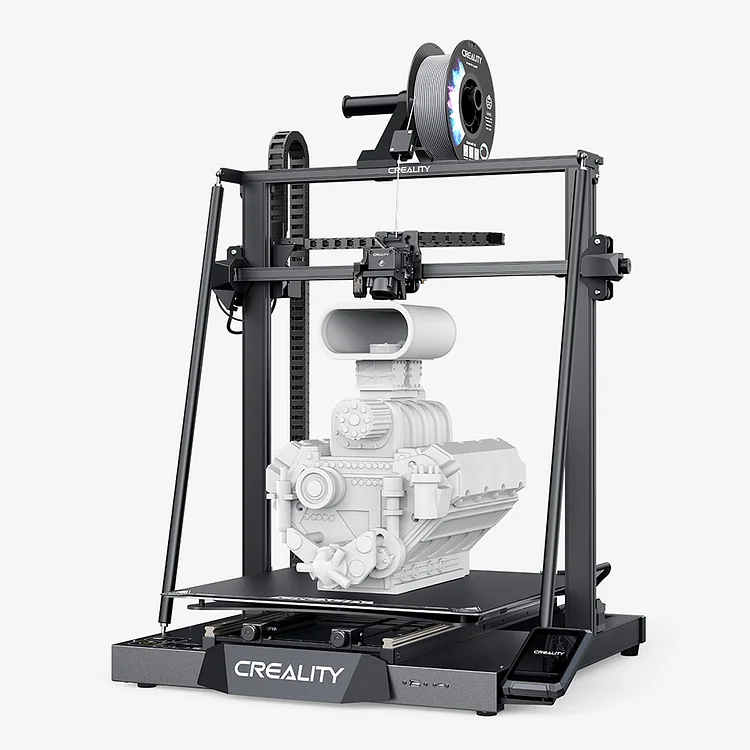Compare Comgrow T500 vs CR M4
Comparison between the best 3D printers
Choose the best 3D printer at the best price. The cheapest 3D printers are here.
Buy a 3D printer here with 3D Fila.
 |
 |
|
| Model | Comgrow T500 |
CR M4 |
| Printing Material | Filament | Filament |
| Buy Filament for Sovol Comgrow T500 | Buy Filament forCreality 3D CR M4 | |
| Estimated price | $799,00 | $1099,00 |
| Manufacturer | Sovol | Creality 3D |
| Release Year | 2024 | 2023 |
| Print Volume [mm] | 500x500x500 | 450x450x470 |
| Printer Size [mm] | 817x810x962 | 655x700x865 |
| Weight [kg] | 39 | 23 |
| Power Loss Recovery | YES | YES |
| Enclosed printer | NO | NO |
| Bed Leveling | Automatic | Automatic |
| Filament End Sensor | YES | YES |
| Bed type | Heated | Heated |
| Power supply system | Direct Drive | Direct Drive |
| Standard nozzle | 0,4 | 0,4 |
| Maximum Nozzle Temperature [°C] | 300 | 300 |
| Maximum Bed Temperature [°C] | 80 | 100 |
| Maximum printing speed [mm/s] | 500 | 180 |
| Filament holder | YES | YES |
| Camera for supervision | NO | NO |
| Recommended filaments | PLA, PETG, Fibra de Carbono, TPU | PLA, PETG, TPU, ABS, PLA-Wood, PA, PLA-CF |
| Recommended slicers | Creality Print, Cura 5.0 ou superior, Prusa Slicer, Orca | Cura, Simplify, Slic3r, IdeaMaker |
| Maximum Resolution [mm] | 0,1 | 0,1 |
| Processor | ||
| Display | 7'' IPS touchscreen, 60Hz | Display touchscreen 4,3'' |
| Power Supply | 500 W | 110/220V / 800W |
| Connectivity | SD / USB / Wi-Fi | |
| Operating systems | Windows, Mac, Linux | |
| Date of registration in the system | 2024-07-18 | 2023-02-06 |
| Release date | 2024 | 2023 |
| Extra features | The Sovol Comgrow T500 stands out for its large print volume of 500x500x500 mm, ideal for large-scale projects. It has a direct extruder with a gear ratio of 6.5:1, speeds of up to 200 mm/s, and high-performance motors. The 7" touchscreen with Klipper software makes navigation easy. The 49-point automatic leveling ensures a perfect first layer. It also has a full metal hotend at 300°C, linear rails on all axes, and WiFi connectivity. | The Creality CR-M4 printer stands out for its easy assembly and automatic table leveling. With dual-gear extruder technology and direct drive, it ensures quality prints. It offers Wi-Fi and LAN connections for easy file sending. Its large construction volume of 450x450x470 mm allows for bold projects. It has linear rails and a high-power Y motor, supporting up to 30 kg on its plate. The innovative design includes an efficient cooling system and a removable screen controller, optimizing usability and comfort during printing. |
| Support for multiple colors and materials (AMS and CFS) | NO | NO |
Notes * |
||
| Cost-benefit | 7 / 10 | 6 / 10 |
| Hardware | 3.6 / 10 | 3.2 / 10 |
| Tela | . | . |
| Print volume | 5 / 10 | 4 / 10 |
| Performance | 4 / 10 | 1 / 10 |
Conclusion |
| In conclusion, when comparing the Sovol Comgrow T500 and the Creality 3D CR-M4, several key differences stand out that may influence a buyer's decision. The Sovol Comgrow T500 is priced more affordably and offers a larger print volume, making it an excellent choice for users with high-volume projects or those who prioritize print size. Its robust features, including a direct drive with a high gear ratio, extensive automatic leveling, and an advanced touchscreen display, enhance its usability and performance. The printer's higher maximum printing speed also positions it as a more efficient option, particularly for rapid prototyping or production runs. On the other hand, the Creality CR-M4, while more expensive, also brings notable strengths such as its ease of assembly and reliable construction quality. It features dual-gear extruder technology, supporting a diverse range of materials. The innovative design elements like an efficient cooling system and flexible connectivity options may appeal to users looking for convenience and user-friendly experiences. Overall, the Comgrow T500 provides greater value for those seeking a cost-effective solution with a larger capacity and enhanced performance. In contrast, the CR-M4 caters to users who may be willing to invest more for a well-rounded, reliable unit with quality construction and additional usability features. Ultimately, the choice depends on the specific needs, budget, and priorities of the user. |

